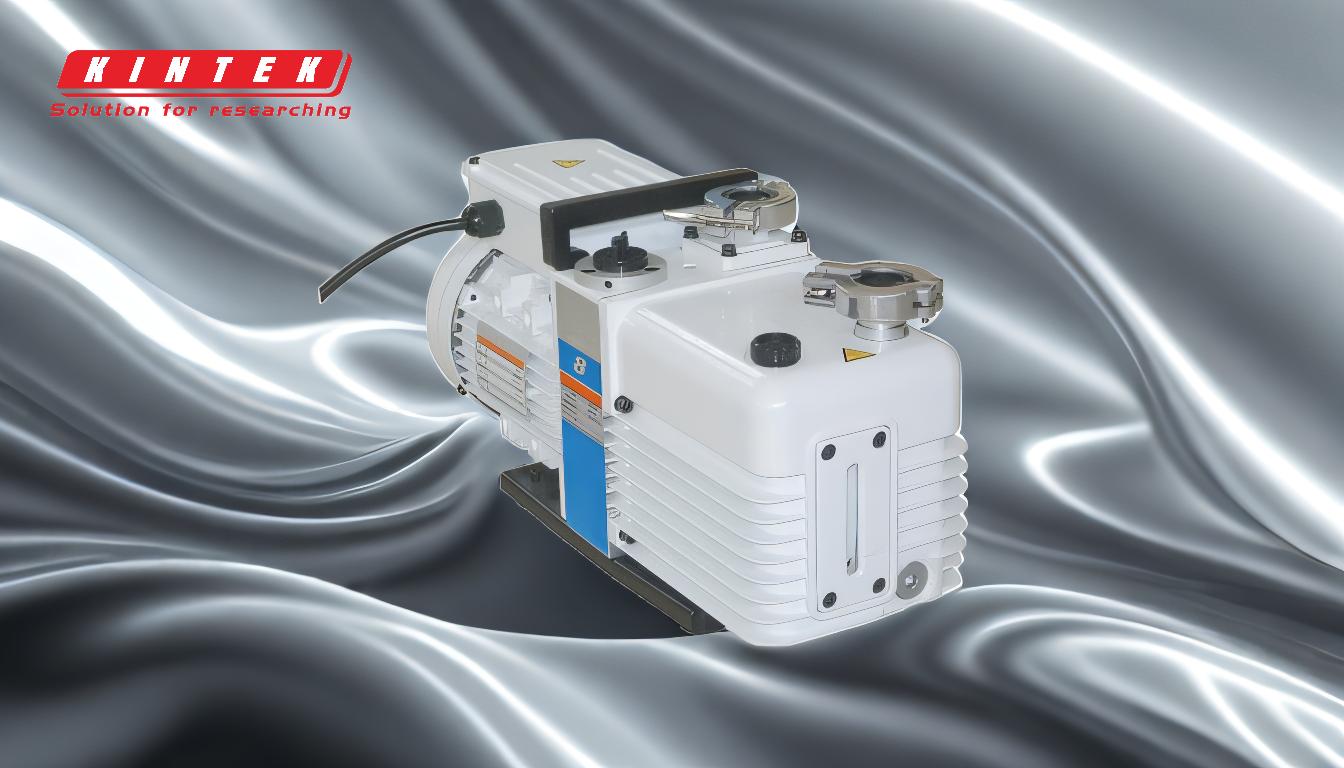Rotary vane vacuum pumps are versatile and widely used in various applications due to their ability to provide strong, consistent vacuum pressures below 10^-3 mbar. They are oil-sealed, making them suitable for continuous suction and dry gas extraction. These pumps are cost-effective and straightforward to use directly in the atmosphere, often equipped with air filters to remove dust particles. Common applications include hydraulic braking systems, freeze dryers, and mass spectrometry. However, they come with challenges such as managing toxic oil waste and difficulty in sourcing replacement parts.
Key Points Explained:

-
Strong and Consistent Vacuum Pressure:
- Rotary vane vacuum pumps are capable of maintaining vacuum pressures below 10^-3 mbar, making them ideal for applications requiring a strong and consistent vacuum.
- This feature is crucial in processes like mass spectrometry and freeze drying, where stable vacuum conditions are necessary for accurate results.
-
Oil-Sealed Design:
- The oil-sealed nature of these pumps ensures efficient operation by reducing friction and wear on moving parts.
- This design also helps in maintaining a consistent vacuum, which is essential for continuous suction applications.
-
Cost-Effectiveness:
- Rotary vane vacuum pumps are considered cost-effective, making them a popular choice for various laboratory and industrial applications.
- Their affordability, combined with reliable performance, makes them a go-to option for many users.
-
Dry Gas Extraction:
- These pumps are particularly suited for extracting dry gases, which is a common requirement in many scientific and industrial processes.
- The ability to handle dry gases without compromising performance is a significant advantage.
-
Atmospheric Use with Air Filters:
- Rotary vane vacuum pumps can be used directly in the atmosphere, thanks to the inclusion of air filters that remove unwanted dust particles.
- This feature enhances their versatility and ease of use in different environments.
-
Common Applications:
- Hydraulic Braking Systems: The consistent vacuum pressure is essential for the proper functioning of hydraulic brakes.
- Freeze Dryers: These pumps are used to create the low-pressure environment needed for freeze-drying processes.
- Mass Spectrometry: Stable vacuum conditions are critical for accurate mass spectrometry analysis.
-
Challenges:
- Toxic Oil Waste: The use of oil in these pumps results in toxic waste that needs to be managed carefully, posing environmental and safety challenges.
- Replacement Parts: Finding replacement spare parts can be difficult, which may lead to downtime and maintenance issues.
In summary, rotary vane vacuum pumps are well-suited for applications requiring strong, consistent vacuum pressures and dry gas extraction. Their cost-effectiveness and ease of use make them a popular choice, despite the challenges associated with oil waste and spare parts availability.
Summary Table:
| Feature | Details |
|---|---|
| Vacuum Pressure | Maintains pressures below 10^-3 mbar, ideal for stable vacuum applications. |
| Oil-Sealed Design | Reduces friction, ensures consistent vacuum for continuous suction. |
| Cost-Effectiveness | Affordable and reliable for lab and industrial use. |
| Dry Gas Extraction | Handles dry gases efficiently without performance loss. |
| Atmospheric Use | Equipped with air filters for dust-free operation in the atmosphere. |
| Common Applications | Hydraulic brakes, freeze dryers, and mass spectrometry. |
| Challenges | Toxic oil waste management and difficulty sourcing replacement parts. |
Learn how rotary vane vacuum pumps can meet your needs—contact us today for expert advice!


